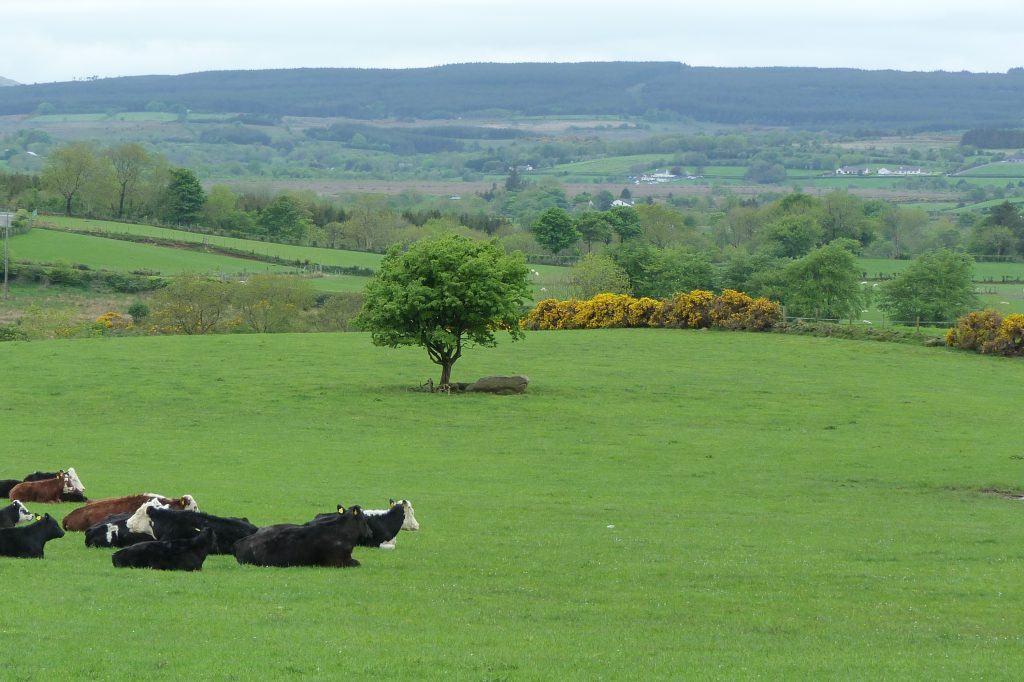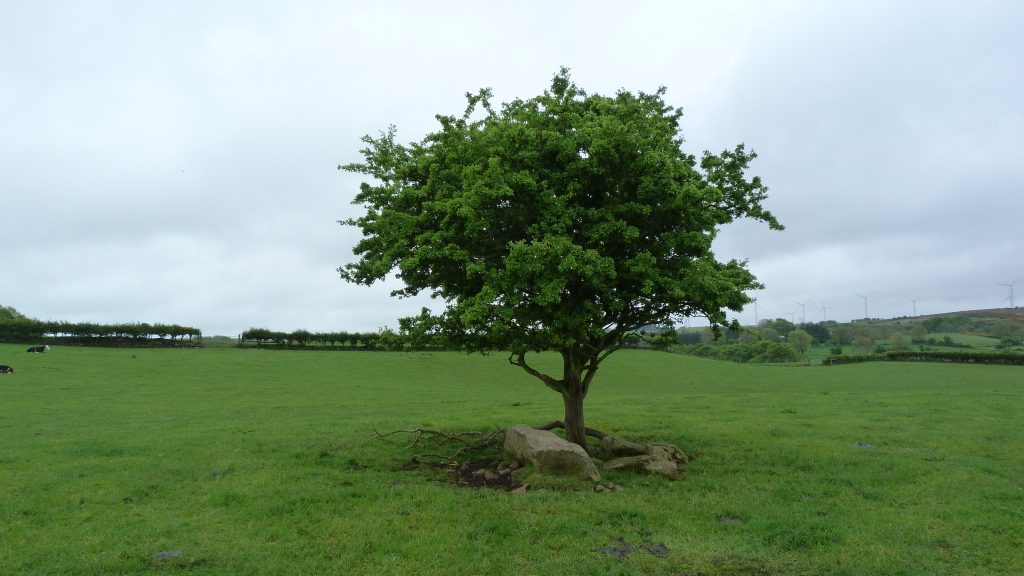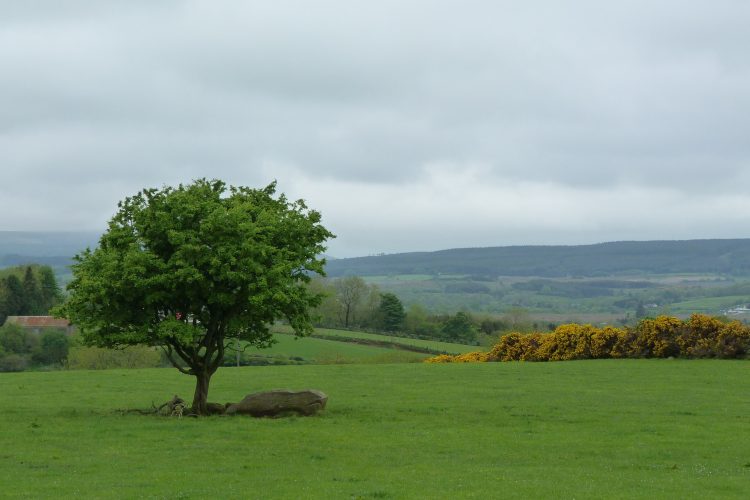19. Slaghtaverty

18. Royal Portrush Golf Club
7th March 2023
20. St Guaire’s Parish Church, Aghadowey
7th March 202319. Slaghtaverty
In a field in Slaghtaverty, a townland near Garvagh, there is a prehistoric cairn, Sleacht Abhartaigh (Slaght Averty) or the Dwarf’s Grave. This is the setting for the story of Abhartach.
Abhartach was a local chieftain who was greatly feared by his people. They eventually called on a neighbouring chieftain, some say Finn MacCool, to rid them of the evil little man. Abhartach possessed magical powers and the chieftain had to slay him three times before he was finally vanquished.
Some say Arbhartach drank the blood of his victims, and it has been suggested that this story was the inspiration for Bram Stoker’s Dracula.
Slaghtaverty and the story of Abhartach
By Rosie McFaul
In the country around Garvagh is a little-known townland known as Slaghtaverty. It is small and would be easily forgotten if it were not for a folktale that begins and ends there.
Slaghtaverty used to have a chieftain known as Abhartach. He was a little man (his name translates as dwarf) but had some powerful magic in him. He was a feared leader who was cruel to his people, using his magical powers to terrorise them.
His people had had enough of the cruelties forced upon them by their tyrant leader and so they went to a neighbouring chieftain and begged for him to intervene. Some say it was Finn Mac Cumhail and others say it was a chieftain by the name of Cathan. After hearing their pleas, the chieftain agreed. He slayed Abhartach whilst he was sleeping and buried the body on the rocky hillside before returning home, his good deed done.
The next day, the news spread, and joy infiltrated the people of the town that the wicked Abhartach had been taken care of. Imagine then, their surprise when Abhartach appeared back among his people, more wicked and cruel than before. His demands were even worse and he was demanding blood no less!
Distraught and terrified, the people went back to the neighbouring chieftain with the news that Abhartach was not in fact dead and was back, and much worse than before. Confused and bewildered, the chieftain did not understand, because he was sure that just the night before he had slain the monster. But news of Abhartach’s evil doings kept coming back to him and he could not stand back as the wickedness continued.
And so he went to Slaghtaverty again, and whilst Abhartach slept he again slayed him and once again buried him by a large rock in the hills. The chieftain returned home for a second time, muttering a hope that this time it was finally finished.

Slaghtaverty – the Dwarf’s Grave.
News quickly spread the next day that Abhartach had finally been vanquished and the people cheered, but their cheers turned to gasps and screams as Abhartach once again appeared in their midst. The tyrant was so angry he demanded more blood and other wicked things – his evilness was much much worse than before.
News spread to the neighbouring chieftain that again it seemed as if Abhartach had cheated death itself. He was mystified and could not understand how it was possible. Confused and embarrassed that he was unable to keep the monster in the ground he decided to consult a druid who lived nearby. The wise man stated that Abhartach was one of the neamh-mairbh, the walking dead, and also a drinker of human blood. He went on to tell the chieftain that a sword of iron would not slay Abhartach and he instructed him to fashion a sword made of yew wood and to drive it into the heart of the monster. When he was dead, he was to bury him upside-down, fill the grave with rocks and clay, place a large boulder atop, and finally encircle it with a ring of thorns. Doing this would keep him imprisoned by the fairy folk.
The druid was duly thanked for sharing his wisdom and, armed with this new knowledge, the chieftain went away to prepare for the final killing of Abhartach. After preparing the burial site in accordance with the druid’s instructions, the chieftain set out with his new sword fashioned from yew wood to slay the wicked dwarf once and for all. Abhartach was slain for the third time, buried upside down in his grave which was sealed with a large rock and a circle of thorns from a nearby hawthorn tree was placed all around his tomb.

The Dwarf’s Grave.
Abhartach has not been heard of since, the townland is now quiet and the people of Slaghtaverty have been bothered no more. The boulder and hawthorn tree can still be seen today but be careful if you visit the Dwarf’s Grave as there are often reports of strange happenings.
Bob Curran tells of the local tradition that the land on which the grave is located is ‘band land’ and reports some rather sinister occurrences. When attempts were made to clear the land and chop down the hawthorn tree the chain saw inexplicably kept cutting out. On another occasion when attempts were made to remove the great stone the chain snapped and one of the workmen suffered a severe cut to his hand, the blood soaked into the ground, disappearing immediately, and some said they felt the ground shake under their feet!
Directions
Co-ordinates: 54.9602, -6.7196 (nearest public access)
This project is receiving financial support via the District Council Good Relations Programme.


